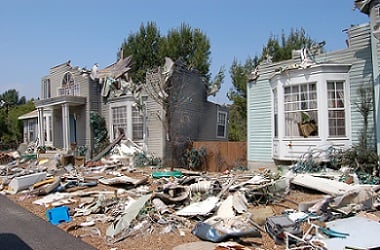Aon Benfield’s catastrophe model development team, Impact Forecasting, has released its natural disasters report for the first half of 2017 – revealing just how much in economic losses have been incurred globally.
According to the
“Global Catastrophe Recap: First Half of 2017” report, global economic losses from natural disasters for the first six months of the year were estimated at US $53 billion. The good news is that figure is 56% lower than the 10-year average of US $122 billion.
As for insured losses, preliminary estimates were pegged at US $22 billion, or 35% lower than the 10-year average of US $34 billion. Severe convective storms (SCS) caused the majority of insurance losses (over US $17 billion), comprising 78% of the loss total.
Search and compare product listings for insurance against a Financial Loss from specialty market providers here
The SCS peril was also found as the costliest disaster type on an economic basis (almost US $26 billion), comprising 48% of the loss total. The majority of the losses were attributed to events in the United States.
As for fatalities, natural disasters claimed at least 2,782 lives during the first half of the year. According to the report, this is the lowest figure since 1986 and is also significantly below the 1980-2016 average of 40,867. Deadliest among the natural disasters was flooding, recording at least 1,806 deaths.
Steve Bowen, Impact Forecasting director and meteorologist, said the financial toll from natural catastrophe events during the first six months of 2017 was enough to lead to challenges for governments and the insurance industry around the world.
“This was especially true in the United States after the insurance industry faced its second-costliest first half on record following a relentless six months of hail-driven severe weather damage. In fact, nearly eight out of ten monetary insurance payouts for global disasters were related to the severe convective storm peril,” he explained.
Of the 1H 2017 global economic losses, around 42% were covered by insurance.
Related stories:
Western Canada to experience more severe fires and floods more frequently: Climate expert
Why is the earthquake protection gap so big in Quebec?


